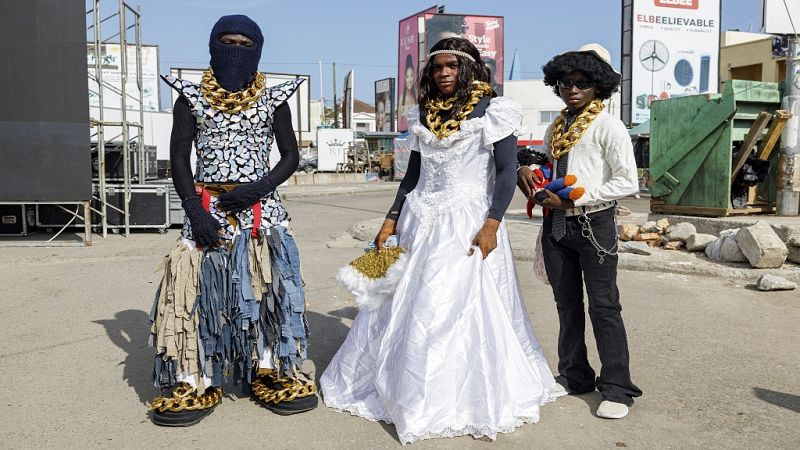As fast fashion's waste pollutes Africa's environment, designers in Ghana are finding a solution

In the trash dumps of Accra in Ghana and along the city's beaches, fast fashion, produced mostly in countries with cheap labor and sold in retailers around the world, arrives at its last stop.
Ghana is one of the leading importers of used clothing in Africa, and familiar brands – Adidas, Reebok, Aussiebum – lie discarded in the sand of Jamestown beach.
Jonathan Abbey is a fisherman here. He says that since fast fashion took over, his fishing nets catch mostly textile waste.
“Although secondhand clothing is not expensive, it is causing problems for us. If nobody buys them, where are they disposed at? They are not disposed of well, and they aren’t even burnt, but are thrown into the Korle Lagoon which then goes into the sea,” he said.
Fast fashion refers to cheap, mass produced clothing with a short life cycle, and it has exploded in popularity in recent years.
Research by McKinsey found that between 2000 and 2014, the number of garments produced annually doubled, and the number of garments purchased per capita rose by 60 percent.
The Or Foundation is an organization working in Ghana to “identify and manifest alternatives to the dominant model of fashion” and conducts research on the secondhand clothing market.
Research that the Or Foundation’s Neesha-Ann Longdon says has shown that “of the 50 million garments we see coming in weekly, on average 40% will leave the market as waste.”
She said that the secondhand clothing market in Ghana is a source of livelihood and creativity for many, but has left Accra’s Kantamanto clothing market flooded with “higher volumes of lower quality goods.”
The Or foundation’s Owo Festival, in its third year, was created to showcase upcycled fashion pieces by local designers in order to raise awareness on fast fashion and encourage people to repurpose their clothes.
Held on the street near the Kantamanto market, designers set up shop with their upcycled goods for sale and had a chance to show them off on a makeshift runway.
Most sourced their materials from Kantamanto.
Richard Asante Palmer is one of the designers who works with discarded fashion waste.
He said he repurposes fabric from shirts into bags, and also often finds heavier fabrics that he can make into more sturdy pieces of clothing.
“Instead of allowing it to choke our gutters, landing on our beaches and in our landfills, I decided to use it to create something like a pant, a jacket or something, to repurpose it for us to use it again,” he said.
Yesterday

